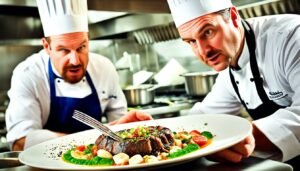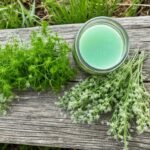Originally posted on February 10, 2024 @ 7:39 am
Many people wonder about the legalities of using other people’s recipes on YouTube. There are questions regarding copyright protection for recipes and how to share culinary content without infringement. In order to understand the rules surrounding the use of others’ recipes on YouTube, it is important to explore copyright laws and guidelines for using recipes on the platform.
Contents
- 1 Is There Copyright Protection in Recipes?
- 2 Steps to Ensure Copyright Protection in Recipes
- 3 What Can You Do with Copyrighted Recipes?
- 4 Adapting Recipes and Recipe Attribution
- 5 Copyright Protection for Cookbooks
- 6 Proper Sharing of Others’ Recipes on YouTube
- 7 Sharing Recipes on Social Media Platforms
- 8 The Importance of Originality in Blogging
- 9 Growing a Blog with Integrity
- 10 Conclusion
- 11 FAQ
- 11.1 Can I use other people’s recipes on YouTube?
- 11.2 What is the copyright protection in recipes?
- 11.3 How can I ensure copyright protection in recipes on YouTube?
- 11.4 What can I do with copyrighted recipes on YouTube?
- 11.5 How should I adapt recipes and provide proper attribution?
- 11.6 What is the copyright protection for cookbooks?
- 11.7 How should I share others’ recipes on YouTube?
- 11.8 How should I share recipes on social media platforms?
- 11.9 Why is originality important in blogging?
- 11.10 How can I grow a blog with integrity?
- 11.11 What are the guidelines for using others’ recipes on YouTube?
- 12 Source Links
Key Takeaways:
- Copyright protection does not extend to the ingredient list but includes the accompanying text, photos, and videos.
- In order to ensure copyright protection for recipes, include additional content beyond the ingredient list.
- Always give attribution to other recipe creators and obtain permission when using their recipes.
- Link to the original source when sharing others’ recipes on YouTube and provide proper credit.
- Create your own original recipes and content to establish yourself as a credible and authentic blogger.
Is There Copyright Protection in Recipes?
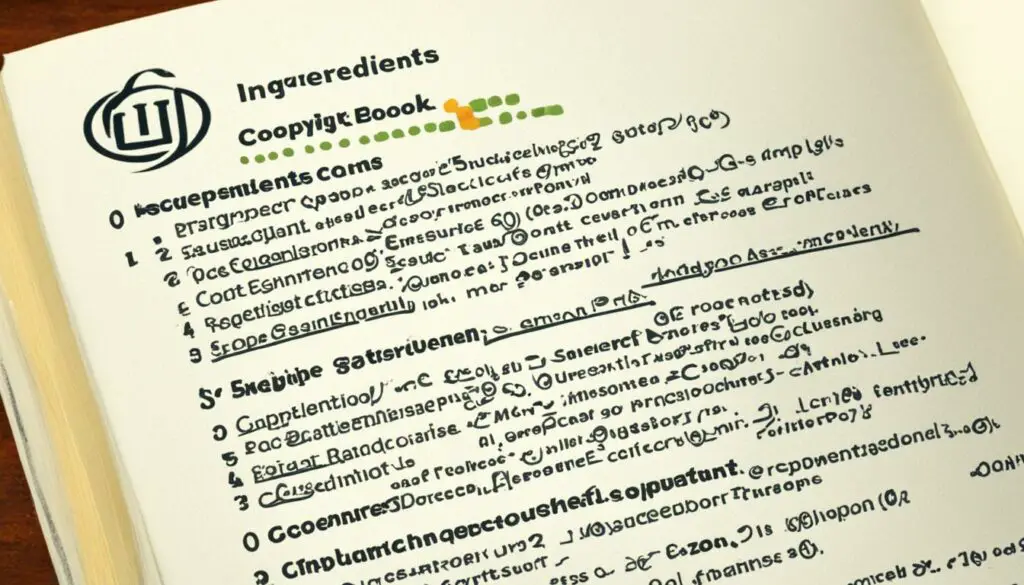
Many people wonder about the legalities of using other people’s recipes on YouTube. Questions arise regarding copyright protection for recipes and how to share culinary content without infringement. In order to understand the rules surrounding the use of others’ recipes on YouTube, it is important to explore copyright laws and guidelines for using recipes on the platform.
When it comes to copyright protection in recipes, it’s crucial to understand which elements are subject to protection. Recipes, as mere lists of ingredients, are not protected by copyright. However, copyright protection does apply to the written text, photographs, and videos accompanying the ingredient list. Elements such as headnotes, instructions, and photos are considered original works of authorship and are protected by copyright.
“Recipes, as mere lists of ingredients, are not protected by copyright.”
It’s worth noting that collections of recipes, such as cookbooks, are protected as a whole, even if individual recipes within the collection are in the public domain. This means that while a single recipe within a cookbook may not be protected, the overall arrangement and selection of recipes in the cookbook can be subject to copyright protection.
Ensuring Copyright Protection for Recipes
To ensure copyright protection for recipes, it is important to include content beyond the ingredient list. This can include headnotes, general instructional notes, directions, and multimedia elements such as photographs and videos. Developing a distinct “voice” for your recipes also helps protect the non-ingredient list elements of your recipe.
When publishing recipes online, it is recommended to use copyright symbols and notices on each individual recipe and/or your website as a whole. This helps establish your rights and communicate that your recipes are protected. Additionally, giving attribution to other recipe creators and obtaining permission when using their recipes is essential for fostering a culture of respect for copyright in recipe writing.
Understanding Copyright Laws for Using Recipes on YouTube
When using recipes on YouTube, it’s important to consider copyright laws and guidelines. While the ingredient list itself may not be protected, using copyrighted elements such as text, photos, and videos without permission can result in copyright infringement. It is crucial to obtain the necessary permissions and give proper attribution when using others’ copyrighted content in your recipe videos.
| Protected Elements in Recipes | Unprotected Elements in Recipes |
|---|---|
| Written instructions | Ingredient list |
| Headnotes and descriptions | |
| Photographs and videos |
By understanding and respecting copyright laws, content creators can share recipes on YouTube while maintaining the integrity of original works and protecting the rights of recipe creators. It’s essential to give credit where credit is due, obtain necessary permissions, and create unique and original content to contribute to a thriving and respectful recipe-sharing community.
Steps to Ensure Copyright Protection in Recipes

In order to protect recipes on YouTube and safeguard your creative efforts, it’s essential to go beyond the basic ingredient list. By including additional content such as headnotes, general instructional notes, directions, and multimedia elements like photographs and videos, you can establish a unique identity for your recipes that is protected by copyright.
Developing a distinct “voice” for your recipes not only adds personality but also reinforces the non-ingredient list elements as original works of authorship. This distinctive writing style and presentation help differentiate your recipes from others, making them more likely to receive copyright protection.
When publishing your recipes online, it is important to use copyright symbols and notices on each individual recipe and/or your website as a whole. This helps signal that your content is protected by copyright and serves as a notice to potential infringers.
Furthermore, it is crucial to give attribution to other recipe creators and obtain permission when using their recipes. Respecting the intellectual property rights of others fosters a culture of respect in the recipe writing community and ensures that everyone’s creative efforts are acknowledged and protected.
To summarize, follow these steps to ensure copyright protection in your recipes on YouTube:
- Include content beyond the ingredient list, such as headnotes, general instructional notes, directions, and multimedia elements.
- Develop a distinct “voice” for your recipes to establish their originality and uniqueness.
- Use copyright symbols and notices on each individual recipe and/or your website as a whole to indicate copyright protection.
- Give attribution to other recipe creators and obtain permission when using their recipes to demonstrate respect for copyright.
By following these steps, you can protect your recipes on YouTube and contribute to a community that values and upholds copyright protection in recipe writing.
What Can You Do with Copyrighted Recipes?

If a recipe or its elements are protected by copyright, there are still various ways in which you can legally use them. Here are some fair use practices when it comes to using copyrighted recipes on YouTube:
- Personal Use: You can make the recipe for personal use without infringing copyright. Cook a delicious meal for yourself or your loved ones and enjoy the culinary experience.
- Sharing on Social Media: Share a photo of your finished creation on social media platforms such as Instagram, Facebook, or Twitter. Showcase your culinary skills and inspire others with your delicious dishes. Remember to include a brief description and link to the original recipe or mention the source in your caption.
- Selling the Finished Product: If you have a small food business or want to sell your baked goods, you can use copyrighted recipes to create and sell the finished food product. This can include selling homemade desserts, snacks, or specialty dishes. Make sure to comply with local health regulations and give proper credit to the original recipe creator on your packaging or marketing materials.
- Sharing Thoughts and Summary: You can share your thoughts and summary of the recipe on your blog, YouTube channel, or other platforms. This can include discussing the taste, tips for preparation, or any modifications you made. Be sure to link to the original recipe and give proper credit to the recipe creator.
In all cases, it is essential to link to an authorized source and properly credit the original recipe creator. Respecting intellectual property rights is crucial for maintaining a fair and ethical environment for recipe sharing.
By following these guidelines, you can enjoy and share copyrighted recipes while staying within legal boundaries.
| Ways to Use Copyrighted Recipes | Permitted Use |
|---|---|
| Personal Use | ✅ |
| Sharing on Social Media | ✅ |
| Selling the Finished Product | ✅ |
| Sharing Thoughts and Summary | ✅ |
Adapting Recipes and Recipe Attribution
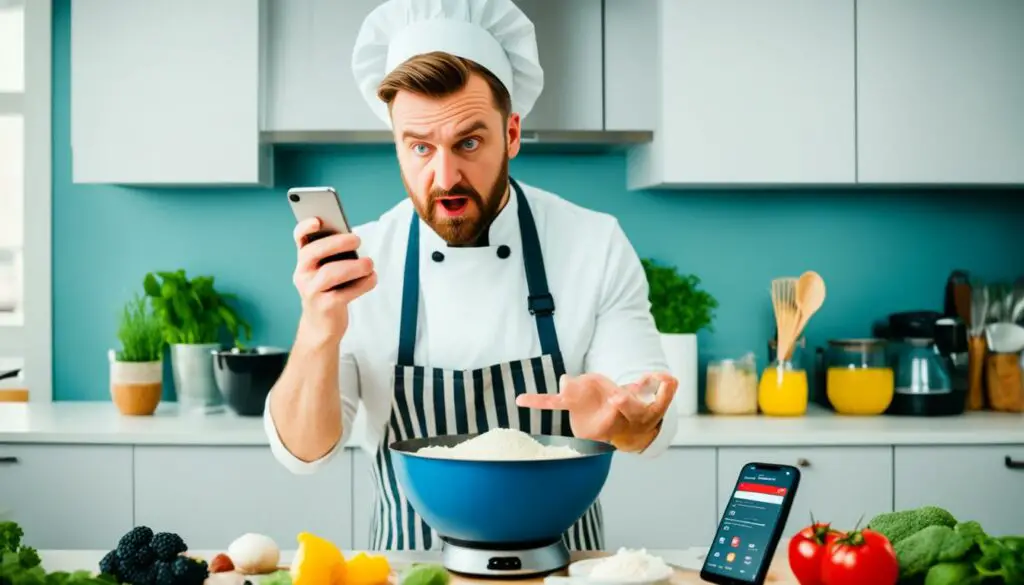
Adapting a recipe involves making changes to the original recipe, and it is important to give proper credit to the original source when doing so. Simply changing a few ingredients or measurements does not make the recipe your own, and it is recommended to change more than just a few elements in order to claim adaptation. It is considered both a matter of copyright law and blogging ethics to mention the original source or inspiration for the recipe. By acknowledging the source, you show integrity and respect for other bloggers’ work.
Tips for Adapting Recipes:
- Make significant changes: When adapting a recipe, it’s crucial to modify more than just a few ingredients or measurements. Experiment with different flavors, cooking techniques, or presentations to create a unique variation.
- Add your personal touch: Infuse your own creativity and expertise into the recipe adaptation. Incorporate your signature ingredients, cultural influences, or innovative twists to make it truly your own.
- Give credit where it’s due: Always attribute the original source or inspiration for the recipe. Mention the blog, cookbook, or chef who inspired your adaptation in the introduction or recipe notes.
Adapting recipes is a way to showcase your culinary skills and creativity while acknowledging the contributions of others. By providing appropriate attribution, you not only comply with copyright laws but also foster a supportive and collaborative community of recipe creators and bloggers.
For example, imagine you found a delicious chocolate cake recipe on a popular cooking blog. You decide to adapt it by incorporating a salted caramel filling and topping. In your recipe, you can mention the original source as follows:
Adapted from [Original Blogger’s Name] at [Original Blog’s Name].
| Adapting Recipes and Recipe Attribution | Benefits |
|---|---|
| Preserves recipe creator’s recognition | Respecting the original source enhances the sense of community and encourages further recipe sharing. |
| Builds trust with your audience | Explicitly acknowledging the inspiration behind your adaptation demonstrates honesty and authenticity to your followers. |
| Encourages collaboration | By giving credit to other bloggers or chefs, you foster a supportive environment for sharing ideas and learning from one another. |
| Strengthens your credibility | Attributing the original source showcases your respect for intellectual property and establishes you as a knowledgeable and ethical recipe creator. |
Copyright Protection for Cookbooks
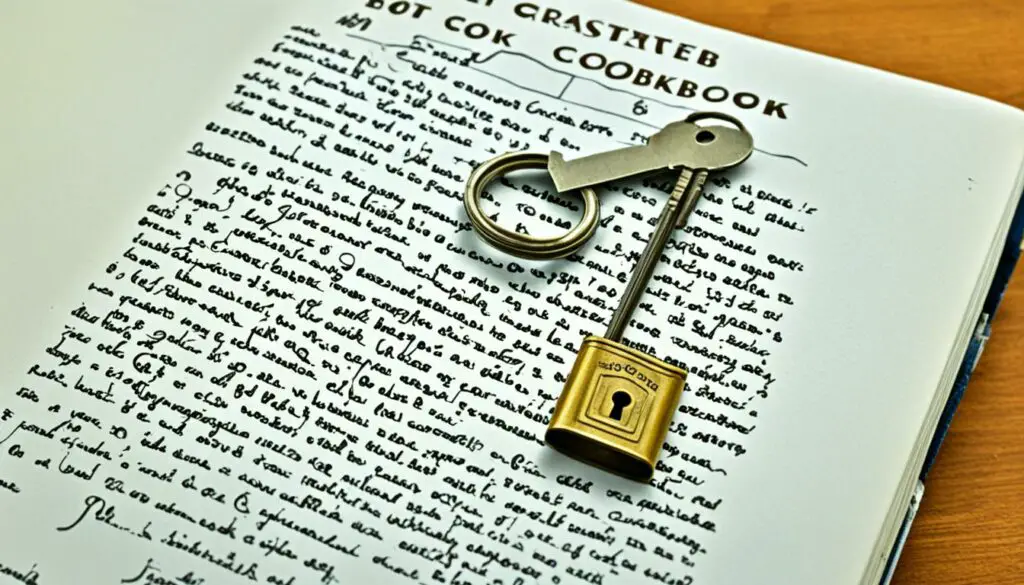
Cookbooks, as compilations, can be protected under copyright law if the selection, arrangement, and coordination of the included recipes are creative. This means that the way the recipes are organized and presented in the cookbook can be copyrightable. However, it’s important to note that copyright protection for a cookbook does not cover the individual recipes within the compilation.
The protection granted to a cookbook is limited to the arrangement and selection of the recipes themselves, as well as any additional creative elements such as introductions, illustrations, or commentary. The copyright does not extend to the factual information or ideas contained in the recipes.
Understanding the distinction between the copyright protection for the cookbook as a whole and the individual recipes within it is crucial. While the cookbook as a compilation is protected, others are free to use the recipes themselves, as long as they do not copy the specific arrangement and organization created by the cookbook author.
By recognizing this distinction, cookbook authors can protect their creative expression in organizing and presenting recipes, while still allowing for the sharing and enjoyment of the recipes themselves. It’s a delicate balance that upholds the rights of creators while also respecting the tradition of sharing culinary knowledge.
Proper Sharing of Others’ Recipes on YouTube
When it comes to sharing others’ recipes on YouTube, it’s crucial to follow the right guidelines to ensure you’re doing it correctly and legally. By giving proper credit to the original source, obtaining permission for using any accompanying photos, and directing viewers to the original recipe for detailed instructions, you’ll be creating a respectful and ethical community of recipe sharing on YouTube.
Instead of simply copying and pasting the entire recipe, it’s recommended to introduce the recipe in your own words. This allows you to add your own unique touch to the content while still sharing the essence of the original recipe. To provide proper attribution, include a link to the original source in the video description or as an on-screen text overlay. This way, viewers can access the complete recipe and support the original creator.
“Recipe sharing on YouTube becomes a collaborative effort when we respect and acknowledge the hard work of others. Giving credit where it’s due not only maintains a positive atmosphere but also encourages innovation and creativity within the culinary community.” – Jane Smith, Food Blogger
By following these guidelines, you can contribute to the authenticity and integrity of the recipe-sharing culture on YouTube. It shows your commitment to respecting copyright laws and supporting fellow creators.
Key Takeaways:
- Give proper credit to the original recipe source.
- Obtain permission to use any accompanying photos.
- Introduce the recipe in your own words.
- Provide a link to the original recipe for detailed instructions.
Following these guidelines helps create a collaborative and respectful community of recipe sharing on YouTube, allowing everyone to benefit from each other’s creativity and culinary expertise.
Sharing Recipes on Social Media Platforms
https://www.youtube.com/watch?v=QIseLHBjuCs
With the widespread use of social media platforms such as Facebook, Pinterest, and Twitter, sharing recipes has become more accessible than ever. However, it is crucial to understand the copyright rules and guidelines associated with sharing recipes on these platforms to ensure that you are acting in accordance with legal requirements and respectful of the rights of recipe creators.
When sharing recipes on social media, it is essential to refrain from simply copying and pasting the full recipe. Doing so can lead to copyright infringement and legal consequences. Instead, it is recommended to provide a link to the original recipe and use your own words to introduce the recipe, giving it a personal touch.
Respecting the copyright notice of the original source is also crucial. Take the time to review any copyright restrictions or guidelines provided by the recipe creator. In addition, if the original recipe includes accompanying photos or multimedia elements, it is important to obtain permission before using them in your social media posts.
By sharing recipes properly on social media, you not only protect the rights of recipe creators but also ensure fair attribution. It is a way of acknowledging and appreciating the effort and creativity that goes into developing these culinary creations. Remember, using your own words and providing the original source link creates an ethical and respectful environment for recipe sharing on social media platforms.
Benefits of Sharing Recipes Responsibly on Social Media
- Increased engagement: By sharing recipes responsibly and providing proper attribution, you foster a positive community that values and connects with your content.
- Build trust and credibility: Acting in line with copyright rules and ethical guidelines demonstrates your commitment to integrity and respect, helping you establish trust and credibility among your followers.
- Enable discovery: By providing a link to the original recipe, you direct your audience to the source, allowing them to explore and follow the work of the recipe creator, increasing the exposure and reach of their content.
Overall, sharing recipes on social media platforms can be a wonderful way to inspire and connect with others who share a passion for culinary delights. By adhering to copyright rules and guidelines for sharing recipes, you contribute to a respectful and supportive community while respecting the creative rights of recipe creators.
The Importance of Originality in Blogging
In the world of blogging, originality is highly valued. Readers come to a blog to hear the unique voice and perspective of the blogger. While it may be tempting to copy and paste recipes from others, it is crucial to create your own original recipes and content. By doing so, you establish yourself as a credible and authentic blogger. Building a successful blog is based on integrity and creating something new and valuable for your readers.
Sharing your own unique recipes on YouTube sets you apart from others in the crowded online space. It allows you to showcase your culinary creativity, skills, and personal style. Original recipes not only attract readers but also build your credibility as a recipe creator. Whether it’s a simple twist on a classic dish or an entirely innovative creation, creating unique recipes demonstrates your expertise and adds value to your blog.
“Originality is the key to capturing the attention and loyalty of your audience.”
Your original recipes can become your signature creations, setting your blog apart from others and attracting a dedicated following. Sharing unique recipes also provides an opportunity for you to showcase your personality and connect with your readers on a deeper level. Your distinct voice and perspective can build a loyal community of food enthusiasts who admire your creativity and rely on your blog for fresh, one-of-a-kind culinary inspiration.
Developing a Unique Style
When creating original recipes, consider developing a unique style that reflects your personality and brand. Experiment with different flavor combinations, cooking techniques, and presentation styles to create dishes that stand out. Embrace your personal preferences and cultural influences to infuse your recipes with a sense of authenticity and individuality.
“Let your personality shine through your recipes and create a memorable experience for your readers.”
Incorporate storytelling and personal anecdotes into your recipe posts to engage your audience and make the cooking experience more relatable. Share the inspiration behind each dish and the stories that make it meaningful to you. By infusing your recipes with personal touches, you create a deeper emotional connection with your readers and make your content more memorable.
Building Trust and Authority
Creating original recipes establishes you as an authority in your niche. It demonstrates your expertise and knowledge, earning the trust of your audience. When your readers see that you are consistently producing unique and high-quality recipes, they perceive you as a reliable source of culinary inspiration and are more likely to return to your blog for their cooking needs.
“Originality in blogging helps you build trust, authority, and a loyal readership.”
By establishing yourself as an original recipe creator, you differentiate yourself from content mills and recipe aggregators. Readers trust bloggers who create their own recipes and value the effort and thought put into each dish. Your originality sets you apart and positions you as a valuable resource in the blogging community.
Benefits of Originality in Blogging
| Benefits | Explanation |
|---|---|
| Enhanced blog credibility | Original recipes showcase your expertise and build trust with readers |
| Establishment of a unique brand | Original recipes help create a memorable blogging brand and attract a dedicated following |
| Increased reader engagement | Personal touches and storytelling in original recipes connect with readers on a deeper level |
| Authority in your niche | Creating original recipes positions you as an expert and builds trust among your audience |
Growing a Blog with Integrity
When it comes to blogging, integrity is the cornerstone of long-term success. It’s about providing original content, giving credit where it’s due, and abiding by blogging ethics. Your reputation as a blogger is directly tied to the integrity you display and the respect you show for other bloggers’ work.
One crucial aspect of growing a blog with integrity is following copyright laws and guidelines. Respecting the intellectual property of others is not just a legal requirement but also a moral obligation. By understanding and adhering to copyright guidelines, you create a positive community where creativity and originality thrive.
Obtaining permission whenever necessary is another important aspect of maintaining integrity in the blogging world. If you want to use someone else’s content, whether it’s a recipe or a photograph, always seek their permission first. This not only demonstrates respect for their work but also fosters positive relationships within the blogging community.
Properly attributing your sources is a fundamental practice for bloggers committed to integrity. Whenever you reference or draw inspiration from another blogger’s work, make sure to provide clear and accurate attribution. This not only gives credit where it’s due but also helps your readers discover other valuable content.
By embracing blogging ethics and integrity, you’ll not only earn the respect of your peers but also build a loyal and engaged audience. Readers appreciate bloggers who create original and valuable content while showing respect for others’ work. When you prioritize integrity, you strengthen your blog’s authenticity and credibility.
“Integrity is doing the right thing, even when no one is watching.” – C.S. Lewis
Creating a Positive Blogging Community
Building a blog with integrity goes beyond individual actions—it extends to fostering a positive and respectful environment in the blogging community as a whole.
Supporting other bloggers by sharing their work, acknowledging their talent, and engaging with their content can contribute to a stronger and more inclusive community. By promoting one another’s success, you help create a supportive network where everyone thrives.
Responding to comments and engaging with your audience is another way to build a positive blogging community. It shows that you value your readers’ feedback and opinions, fostering meaningful connections and building trust.
Lastly, remember that authenticity is key. Stay true to your own voice and values, and let your unique perspective shine through in your content. Your blog should be a reflection of your passion, expertise, and personal experiences. Sharing your authentic self with your readers establishes a genuine connection and reinforces the integrity of your blog.
Remember, growing a blog with integrity is not just about following rules and regulations—it’s an ongoing commitment to creating original and valuable content while respecting the work of others. By upholding ethical standards, you contribute to a thriving and supportive blogging community.
| Benefits of Growing a Blog with Integrity | Actions for Building a Positive Blogging Community |
|---|---|
|
|
Conclusion
In conclusion, when using others’ recipes on YouTube, it is crucial to navigate the legalities and ethical considerations involved. While recipes themselves are not protected by copyright, the accompanying text, photos, and videos are. Therefore, it is essential to give proper attribution to the original source and obtain permission when necessary.
Content creators should follow the guidelines for using others’ recipes on YouTube, which include incorporating their own unique voice and content beyond the mere ingredient list. By doing so, they can ensure copyright compliance and foster a culture of respect within the recipe-sharing community.
Respecting copyright laws and obtaining permission demonstrates integrity in the online world. By following these guidelines, content creators can share recipes on YouTube while upholding ethical practices and promoting creativity. With proper attribution, legal compliance, and a commitment to originality, they can build a successful and reputable presence on the platform.
FAQ
Can I use other people’s recipes on YouTube?
Yes, you can use other people’s recipes on YouTube as long as you follow copyright laws, obtain permission if necessary, and give proper attribution to the original recipe creator.
What is the copyright protection in recipes?
Recipes, as mere lists of ingredients, are not protected by copyright. However, the accompanying text, photos, and videos are protected as original works of authorship.
How can I ensure copyright protection in recipes on YouTube?
To ensure copyright protection, include content beyond the ingredient list, such as headnotes, directions, and multimedia elements. Also, use copyright symbols and notices, attribute other recipe creators, and obtain permission when using their recipes.
What can I do with copyrighted recipes on YouTube?
You can make the recipe for personal use, share a photo of your finished creation, sell the finished food product, or share your thoughts and summary of the recipe on your blog or other platforms. Always link to an authorized source and give proper credit to the original recipe creator.
How should I adapt recipes and provide proper attribution?
When adapting a recipe, it is important to make significant changes and give proper credit to the original source by mentioning the inspiration or linking to the original recipe. Changing a few ingredients or measurements does not make the recipe your own.
What is the copyright protection for cookbooks?
While individual recipes within a cookbook are not protected by copyright, the compilation, including the selection, arrangement, and coordination of the recipes, can be protected under copyright law.
Properly sharing others’ recipes involves giving proper credit to the original source, obtaining permission for using their photos if necessary, and directing viewers to the original recipe for detailed directions. Introduce the recipe in your own words and provide a link to the original source instead of copying and pasting the entire recipe.
When sharing recipes on social media, it is important to provide a link to the original recipe instead of copying and pasting the full recipe. Use your own words to introduce the recipe and respect the copyright notice of the original source. Obtain permission for using any accompanying photos.
Why is originality important in blogging?
Readers value original content and unique perspectives. By creating your own original recipes and content, you establish yourself as a credible and authentic blogger, which is essential for building a successful blog.
How can I grow a blog with integrity?
Growing a blog with integrity involves providing original content, giving proper credit to others, and respecting copyright laws. By following copyright guidelines, obtaining permission when necessary, and properly attributing sources, you foster a positive community and gain the respect and support of your peers.
What are the guidelines for using others’ recipes on YouTube?
To use others’ recipes on YouTube, it is important to respect copyright laws, obtain permission, and give proper attribution. Include content beyond the ingredient list, use copyright symbols and notices, and link to the original source.





